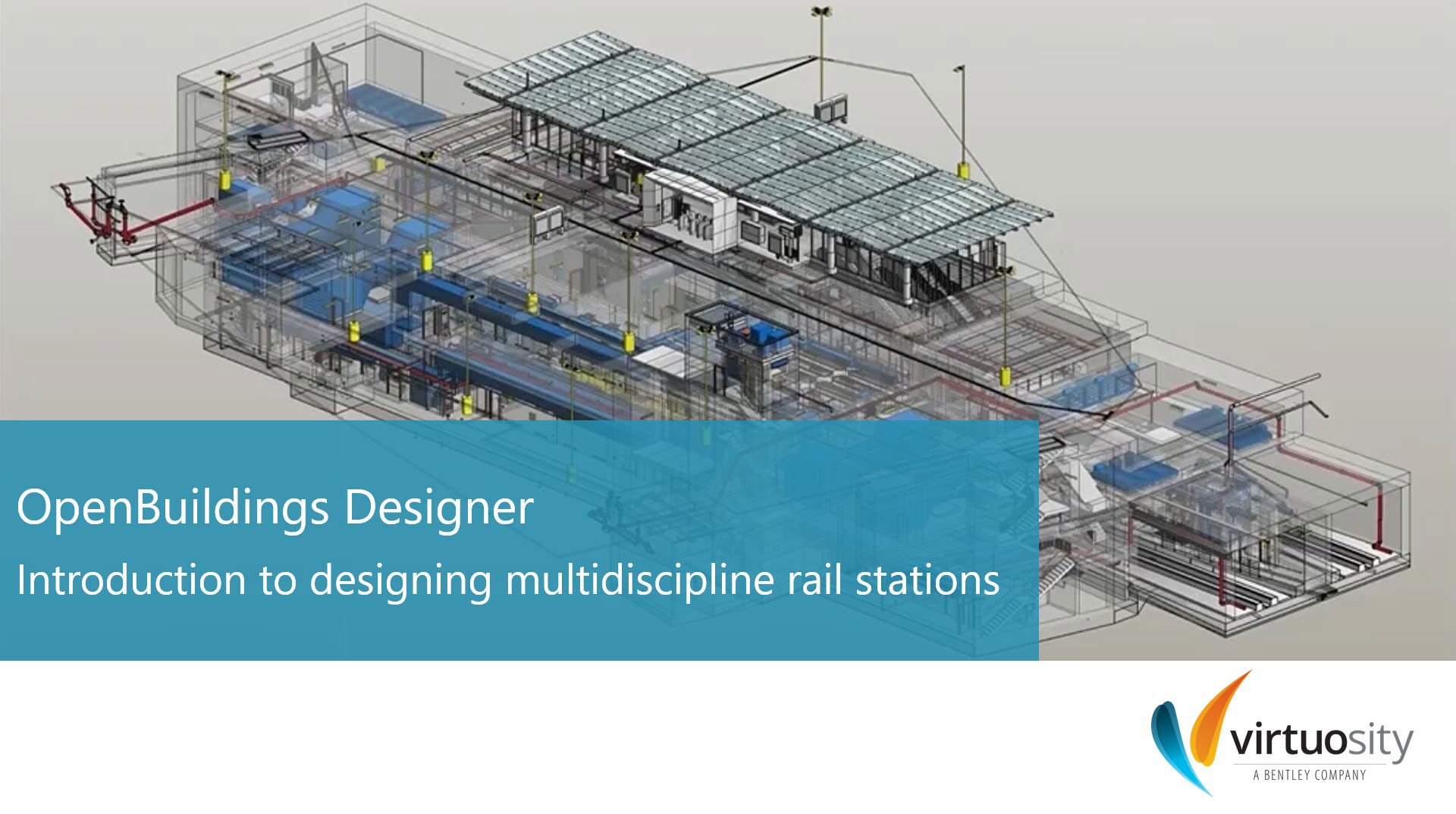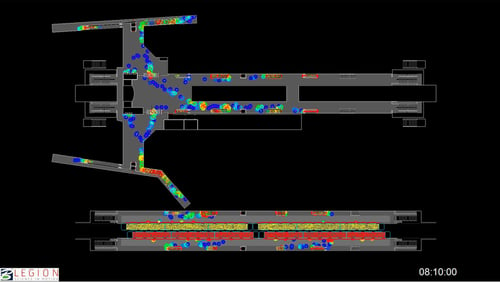Part 1 – Designer Capabilities and Interoperability for Station Design
Available On-Demand
Get an overview of the capabilities of OpenBuildings Designer that makes it ideal for all aspects of station design including spatial design, BIM, collaboration with other disciplines, computational design, visualization and pedestrian simulation. Get an introduction to GenerativeComponents and LEGION Simulator.
In this webinar, you will learn about:
- Key features of OpenBuildings Designer that make it an effective tool for station design and facility operations
- Unrestrictive design environment and interoperability of OpenBuildings Designer with other disciplines using the *.dgn format
- GenerativeComponents for exploring various options for iterative refinement
- LEGION Simulator for pedestrian simulation scenarios
- The Virtuosity licensing model

Part 2 – Computation Design for Linear Infrastructure
Available On-Demand
Design exploration is a non-linear and iterative process. See how OpenBuildings Designer leverages computational design methods to provide a fast, efficient and effective method of exploring design possibilities. Once the design is generated by a set of rules, change is automatically propagated without the need to manually re-build the entire model.
In this webinar, we will provide insight on capabilities that computational design offers for linear infrastructure like station design, railways, tunnels, viaducts.
You will learn about:
- How computational design allows the teams to focus on resolving problems and finding better design solutions
- The basics of using computational design for linear infrastructure
- Station roof design, tunnel segment and viaduct modelled using GenerativeComponents
- Generating node type, insights on some node techniques and functions
- Best practices with repetitive geometry
- The Virtuosity licensing model

Watch Now
Part 3 – LEGION Simulator for People Flow Analysis in Station Design
Available On-Demand
Understand how pedestrian simulation helps to pre-examine an infrastructure’s performance and functionality during the design process. See examples of how enhanced pedestrian flow capabilities in LEGION Simulator can improve the station design and passenger experience and safety.
The webinar will also discuss how the contextual changes over the years of operation, like social distancing due to COVID-19, can be incorporated into the design using pedestrian simulation.
In this webinar, you will learn about:
- The concept of people flow analysis
- The movement algorithm that explains how pedestrian simulation can reflect the behavior of real people
- How LEGION Simulator relates to BIM applications including OpenBuildings Designer
- How pedestrian simulation can help project owners make informed decisions, minimizing investment cost while maximizing the functionality and service lifespan of the infrastructure
- The Virtuosity licensing model

Webinar Presenters

Sanchayan Chatterjee
User Success Manager,
Virtuosity
Sanchayan joined Bentley in 2017. He is working as a User Success Manager for Virtuosity. He has trained people from AECOM, WSP, AIDEA, Manipal Academy of Higher Education, Singapore Polytechnique University etc. Prior to Bentley, he had worked with Christopher Charles Benninger Architects as a Project Architect in both IIM Calcutta and IIT Hyderabad projects.

JinLing Yeo
Associate Consultant, Virtuosity
JinLing is a Consultant for OpenBuildings Designer in Bentley Systems, since June 2018. She is specialized in OpenBuildings Designer Computational Design (GenerativeComponents). Since then, she has conducted numerous OpenBuildings Designer trainings and provided Professional Services to users locally and internationally.

Yoothawee Haempun
A licensed architect with 20+ years of experience, Yoothawee started his career forking for rail operators since 2001. As early as 2007, he started working with LEGION. In 2018, LEGION was acquired by Bentley Systems. Since then, Yoothawee is assisting clients in the use of LEGION pedestrian simulation software as well as on the integration with OpenBuildings Designer. Over the years, he has helped major metro and rail operators, such as Transport for London or MTR Hong Kong, as well as major contractors during design development at construction stages.
/Virtuosity%20Branding/Virtuosity_Logo_2022-1-1.png?width=185&height=75&name=Virtuosity_Logo_2022-1-1.png)